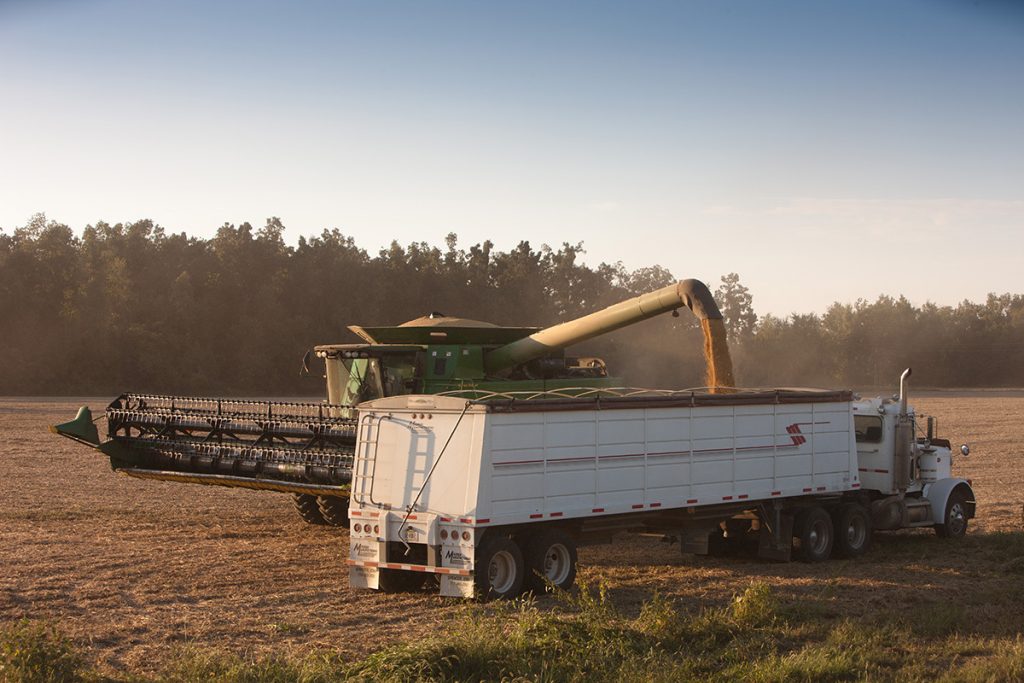The Role of Innovation and Technology in Soy Industry
Farmers of soybeans are highly innovative, employing technology to develop more sustainable and functional crops. They cultivate novel kinds that provide healthier and more functional goods, all while embracing technology and sustainable approaches to preserve land for future generations.

They pursue soybean farming innovation by employing regenerative agricultural systems and adding biotechnology innovations. To help achieve these goals, the United Soybean Board collaborates with farmers to develop best practices that enable soy farmers to be more efficient with their inputs and strive toward producing a superior bean.
This article will examine innovation and technology’s role in the soy industry. Read on.
Multi-Crop Thresher (MCT)
Traditional manual threshing is time-consuming and results in low product quality, deterring farmers from investing in soybean production. To reduce labor inputs and enable innovative soy products, Soybean Innovation Lab (SIL) has designed a multi-crop thresher that can be produced locally at a reasonable cost.
Over four years, SIL collaborated closely with local businesses and farmers to design, fabricate, field test, adapt, improve, and manufacture a pilot thresher. SIL has already educated over 200 fabricators in ten countries to build, service, and maintain multi-crop threshers.
Over 280 threshers across Africa have been sold by SIL trainees, and 70 entrepreneurs are currently commercially running the SIL MCT.
Regenerative Farming
Sustainable farming approaches such as regenerative farming are one way US soybean growers pursue farming innovation. Regenerative agriculture refers to a set of agricultural practices that strive to restore the health of the soil and keep it viable for long-term use.
Sustainability and regenerative farming are becoming increasingly crucial as consumer demands rise and farmers are required to produce more crops. As a result of this growing demand, US soybean farmers are dedicated to using innovative production practices to promote sustainability initiatives.
Agriculture Technology & Biotechnology
Agriculture (AG) technology, particularly biotechnology, plays a role in how farmers pursue innovation. Bioengineering aids soybean growers by reducing herbicide applications, reducing weed and pest pressure, increasing yields and earnings, and providing other environmental benefits.
More farmers are increasingly experimenting with AG technology, such as precision farming. Precision farming, a technology-based strategy to make farms more efficient, is crucial to soybean output and yield. GPS, satellite mapping, and other technologies can assist farmers in making better use of their property.
Advances in the field also aim to improve nutritional advantages for customers, guard against adverse weather conditions, and combat global malnutrition.
Soybean Management with Appropriate Research and Technology (SMART) Farm Program
The SMART Farms are knowledge and technology hubs that provide evidence-based technical advice on optimum agronomic techniques for soybean production to farmers, practitioners, agricultural development organizations, and governments.
In SMART Farm trials, research-based suggestions on various input bundles resulted in significantly higher yields and profitability.
Pan-African Soybean Variety Trials (PAT)
In Africa, there have been few active breeding projects for soybean, and the few current soybean cultivars need higher yielding. The Pan-African Soybean Variety Trials (PAT) initiative at SIL was created to overcome these shortcomings.
PAT expedites introducing and testing commercial soybean varieties acquired from Africa, the United States, Australia, and Latin America to provide the private sector and processors with a broader seed option. PATs began trials in one country and four sites in 2016 and have expanded to 24 countries and 147 locations.
With technical assistance from SIL, a network of 62 governmental and commercial sector partners conducted various experiments. PATs successfully got seven new soybean varieties to farmers in Ghana, Ethiopia, Malawi, Mali, and Uganda, with ten more in multiple countries in the registration pipeline.
Soybean utilization and products
1. Livestock feed
Soybean is a valuable commodity worldwide, owing to its nutritional value as a food and feed ingredient. Its economic and nutritional worth is enhanced by its high protein content, balanced essential amino acid profile, and presence of other vital elements.
The presence of necessary amino acids accounts for the high usage rate as a cattle protein source. As a result, soybean meal can increase animal production in cattle, swine, poultry, and aquaculture.
2. Human Food
Soybean as a human food exists in two forms, depending on region and cultural heritage. Eastern hemisphere populations consume whole soybeans and processed soy meals daily, while Western hemisphere populations primarily consume processed soybeans.
Eastern soy foods are classified into two types: fermented and non-fermented. Whole seed options such as whole dry soybeans, soy nuts, edamame, and processed goods such as soy flour, soy milk, and vegetative soy sprouts are examples of non-fermented soy meals.
Many soy food products have been integrated into Western cultures, and they are becoming increasingly popular as consumers seek plant-based protein sources. However, most soybeans consumed in Western diets are dietary products derived from soybean meal and oil.
The soybean meal can be processed into soy flour, protein concentrates, and protein isolates, which are then utilized in bread mixes, morning cereals, infant food, and exercise supplements. For various cooking purposes, soybean oil is frequently used in vegetable and margarine mixes.
Because of the possible health benefits of soy eating, the importance of traditional and novel soy food usage has persisted.
Bottomline
Food systems face enormous challenges such as population growth, resource competition, global food chain complexity, food consumption, climate change, increased biofuel production, limited food access, unsustainable agricultural practices, a lack of farmers’ and workers’ rights, and food waste.
Because society is undergoing transformational growth in telecommunications, including digital agriculture, new physical systems, and renewable energy, technical innovation is unavoidable in the future of sustainable food systems (SFSs).
The catalog of prospective food-related technology has been expanded. However, a more thorough examination of technological innovation and its potential impact on food security is urgently required.


